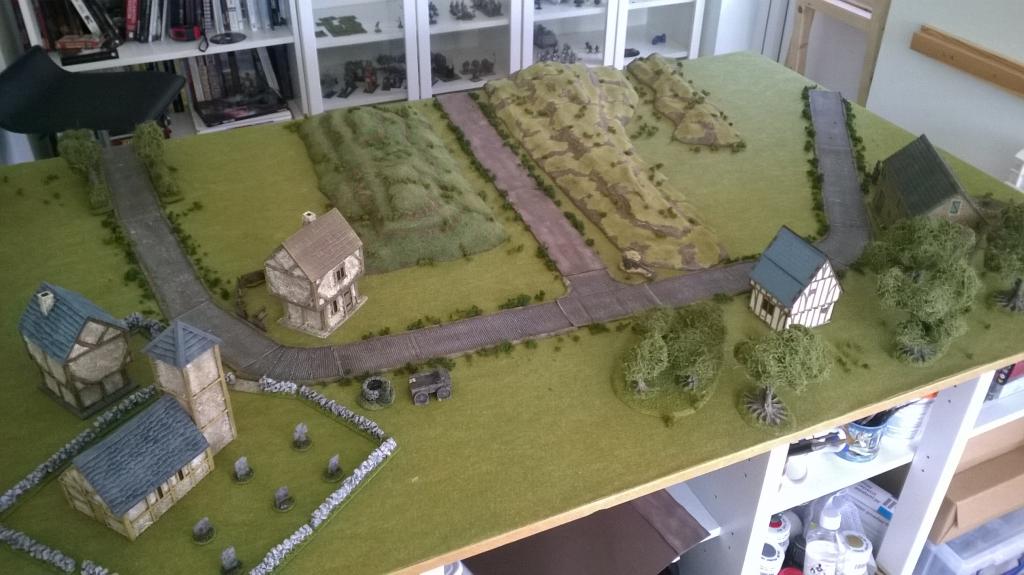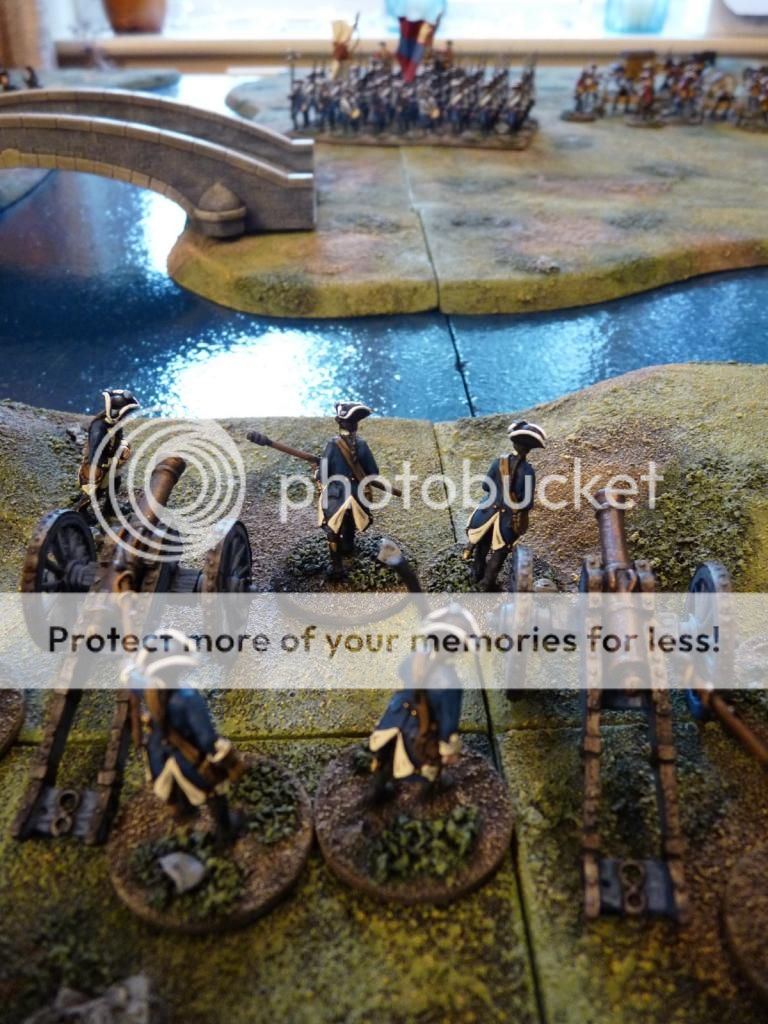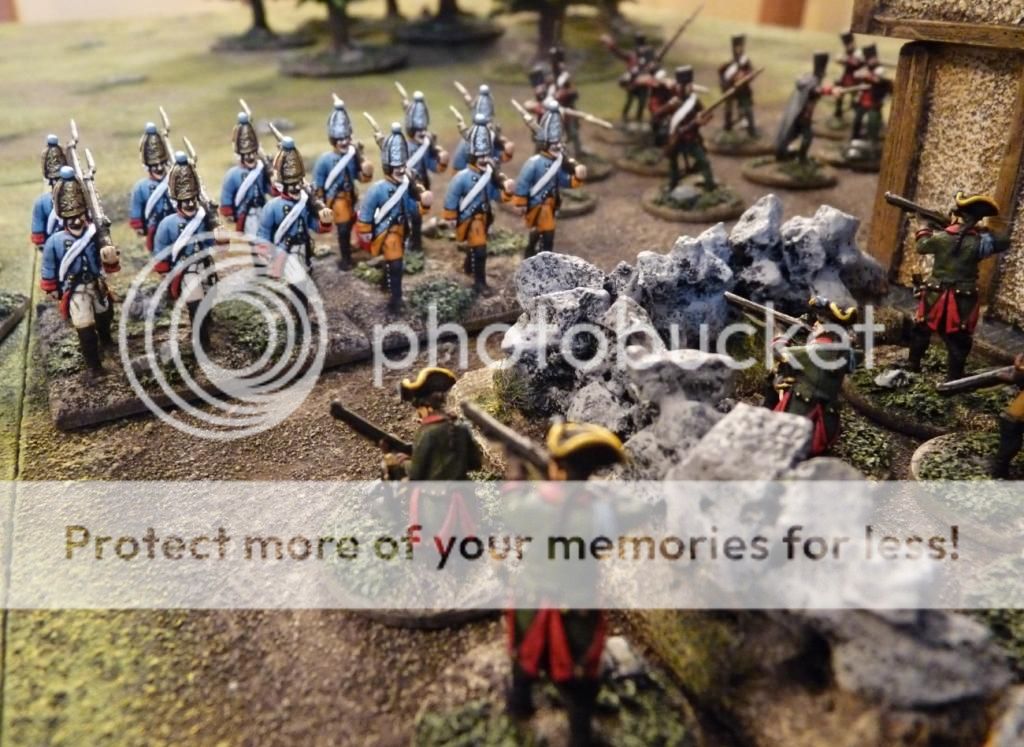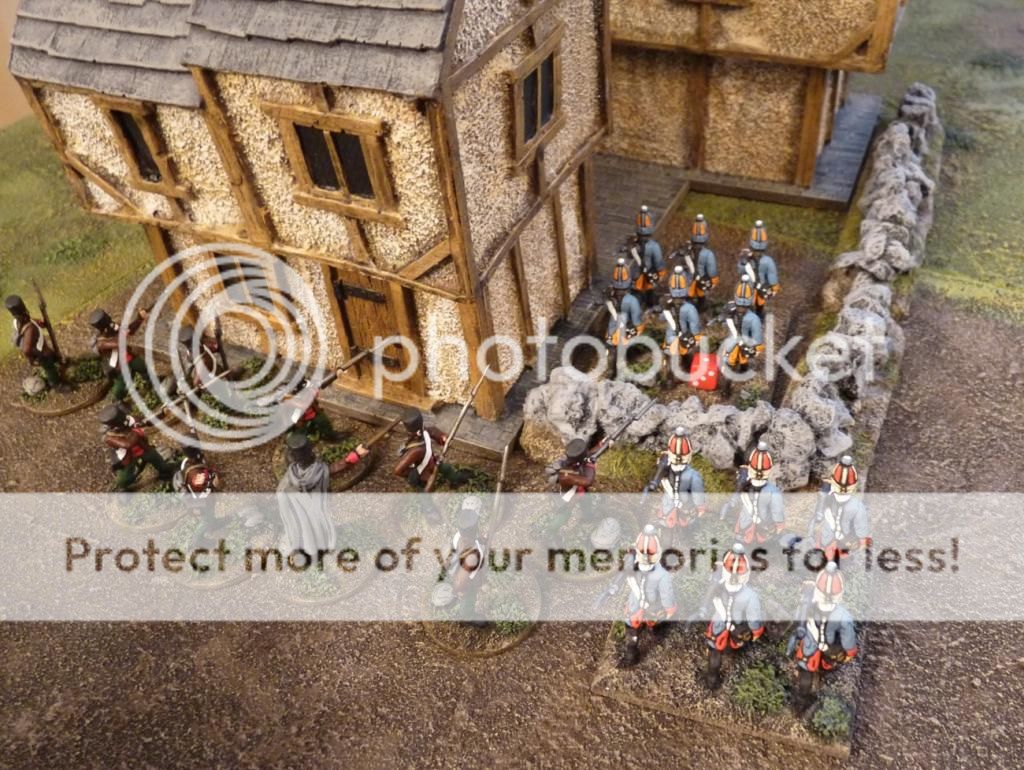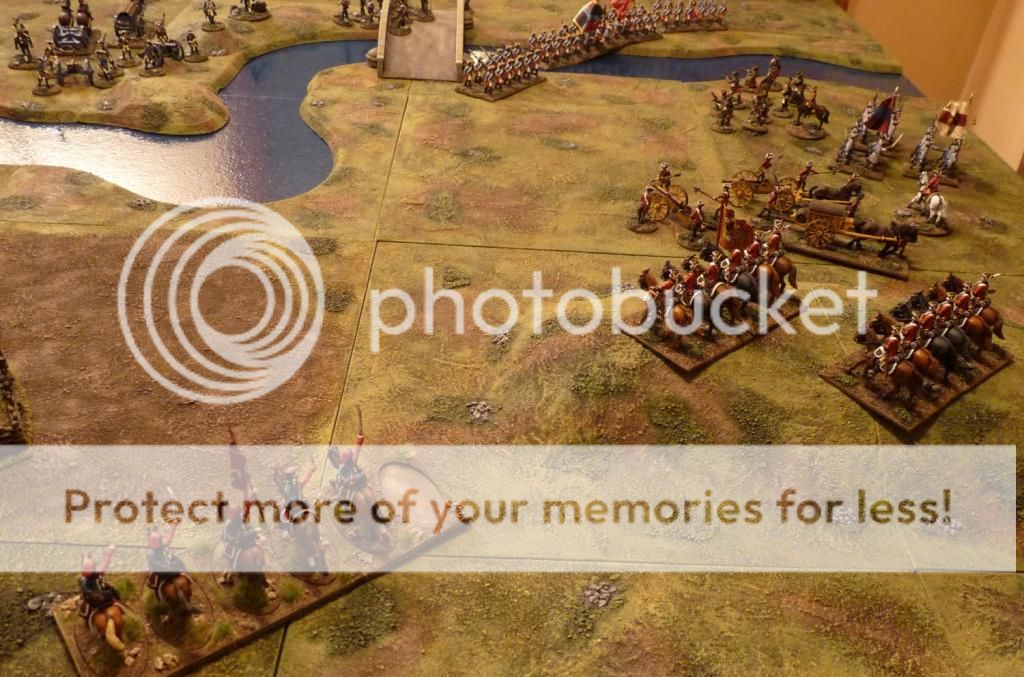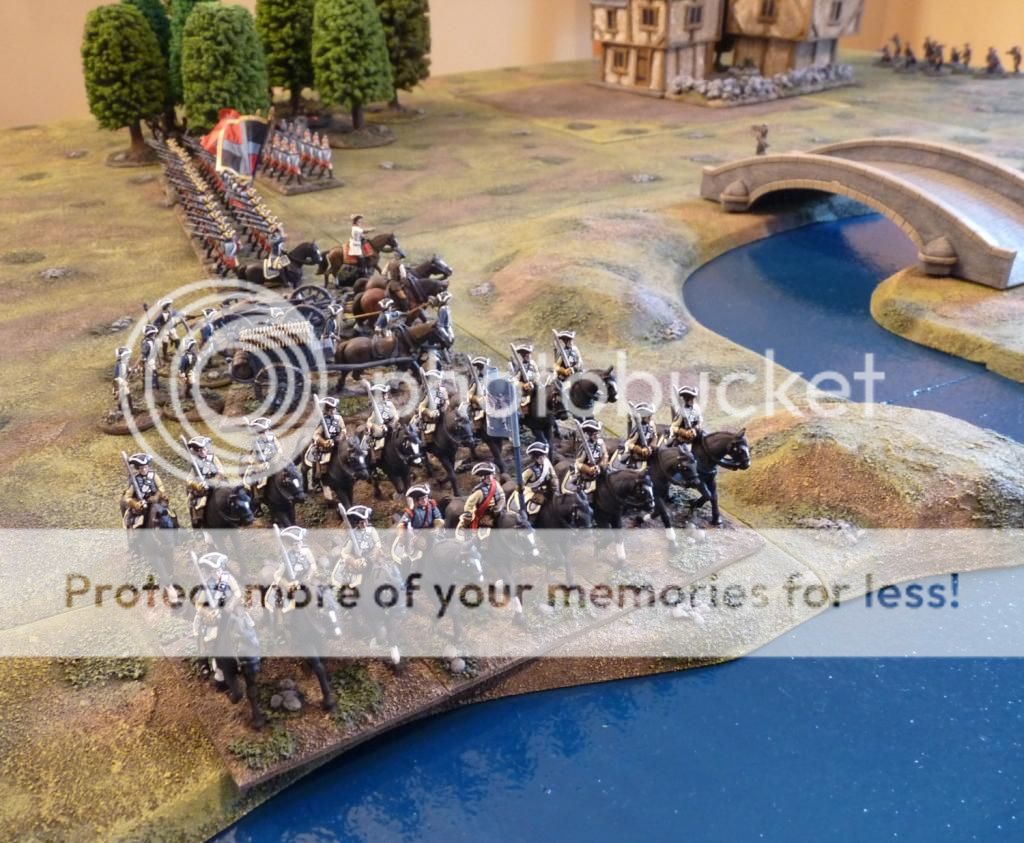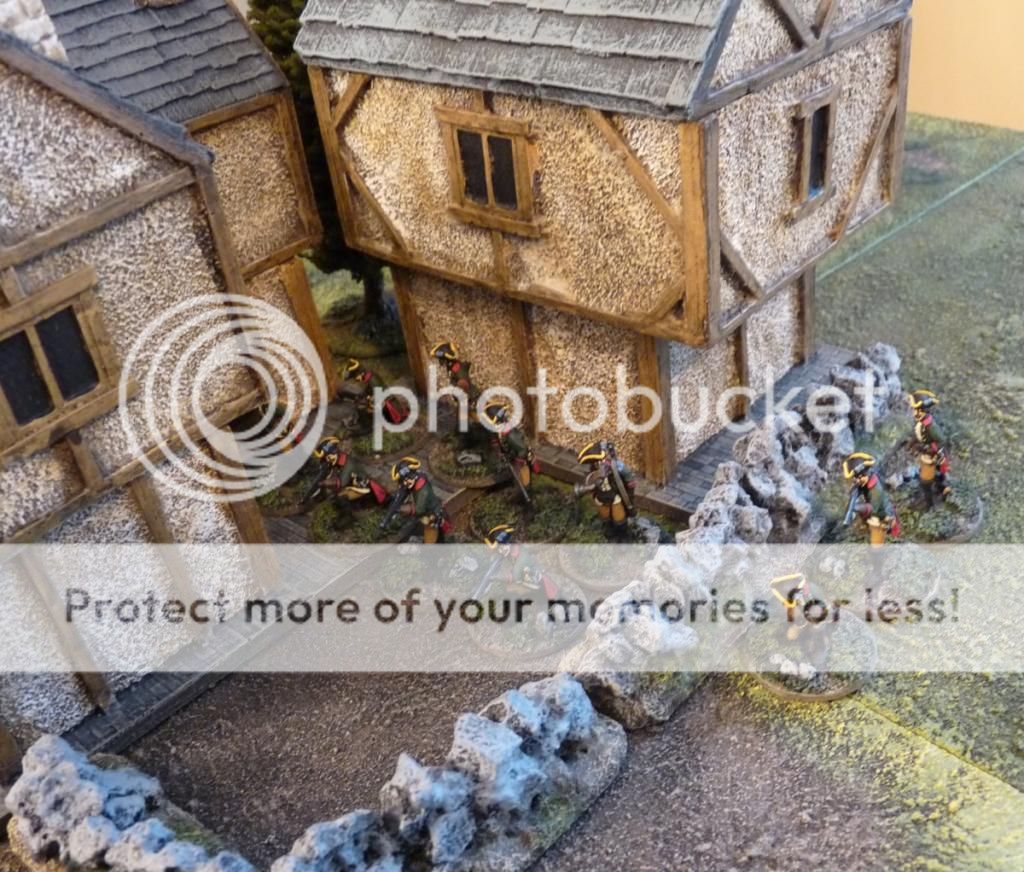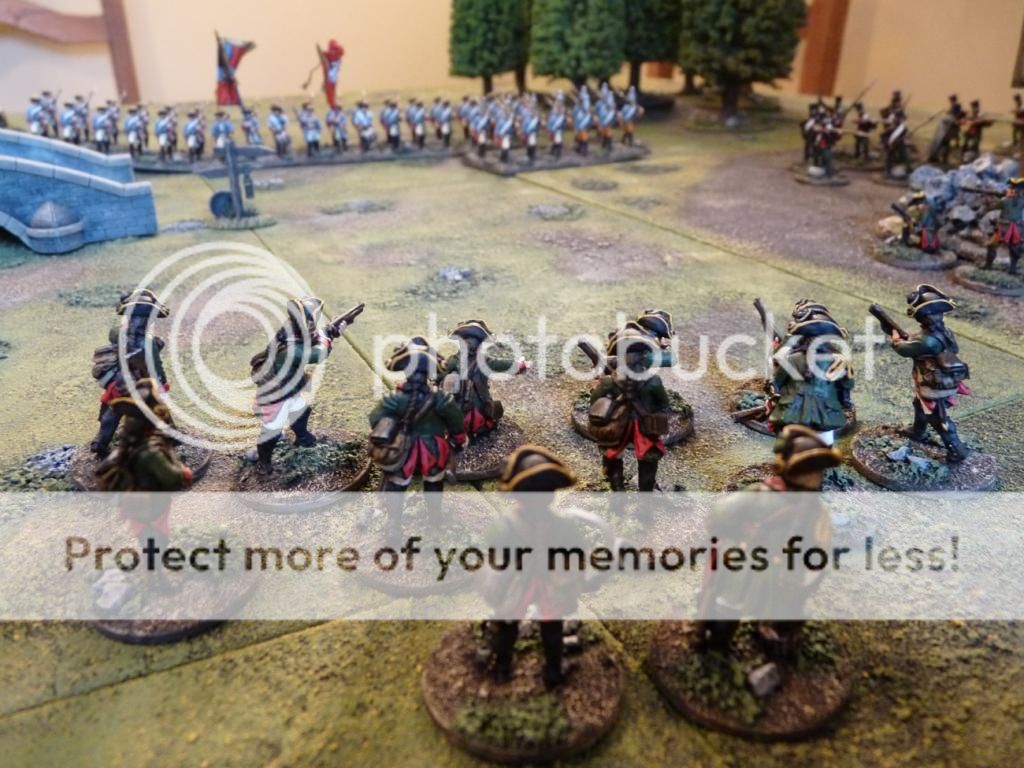With the Medetian heavy cavalry having shrugged off the enemy Hussars’ opportunistic attack, and their infantry driving on the village and bridge, General Amore was feeling confident that the battle was going his way. His men were doing their duty well and his artillery had the Fleurian infantry in its sights.
The action was not decided yet, however.
General Bevue watched anxiously from the other side of the river as his Jager bore the brunt of the Medetian assault. Although they blasted away at the approaching enemy, too few Grenadiers and Grenzers fell to slow the advance.
Closer to the river the Wurttemberg Jager were trying to hold their own against the serried ranks of the Braganza Regiment, who traded a powerful first volley against the constant skirmishing fire of the Jager.
A general view of the battlefield at this time, with the infantry coming to grips, the artillery in place and the cavalry yet to fully engage:
Both sides’ infantry regiments were manoeuvring for control of the bridge but neither seemed keen to storm across it until things were settled in their favour elsewhere.
With the cavalry on the other flank yet to really get stuck into each other, the Fleurian artillery decided to intervene first. With an enfilading volley of prodigious dice throwing, 7 hits were scored on the hapless Medetian Cuirassiers (only 2 were saved) as they struggled to form up on dry ground. This was to be a decisive point in the battle.
The Medetians were tough fighters though. The Grenadiers went in with bayonets fixed and the hard-hit Cuirassiers turned to face the Fleurian Dragoons as though they were unwilling to admit the presence of the guns that were busy re-loading..
The infantry fight continued meanwhile..
The reason everyone has Grenadiers in their army – one turn of fighting and the village was theirs, with the Friant Jager taking to their heels.
The Medetians were about to receive a blow to their chances however, when a second artillery hammer blow was delivered on the Cuirassiers. Reduced to half strength, they were forced to retire, leaving the entire flank open and with only the river to protect the artillery, the Medetian line of communication and, basically, their whole position.
General Amore faced a moment of truth; should he accept that his cavalry’s departure had rendered his position untenable or ignore all that and push on with his attack? From fighting stock going back generations, he wasn’t going to give up now! Over the bridge went the 1st company of the Braganzas. Nearby the opposing lines blazed away at each other, with casualties mounting on both sides.
After suffering some casualties, and being outflanked due to the loss the village, the Wurttemberg Jager splashed back over the river and took up new firing positions. Fearing a collapse, Bevue’s ADC waded into the fray and directed the Bravence regiment into positions to repel attacks from two directions.
Seeing the backs of the Cuirassiers as an opportunity, the Fleurian Hussars benefited from a very good command roll by Bevue and thundered forward at an outstanding pace. The Rutowsky Dragoons left their position on the Medina di Spurlacco and followed the Hussars to threaten the flank of the Medetian artillery..
.. which frantically turned a gun to oppose them.
The Weissach Grenz, having helped the Grenadiers take the village, quickly about-turned and dashed back to protect their precious guns. Would their effort be in vain?
Everything was about to turn on a single moment – the Medetian infantry stormed over the bridge into the Fleurian line. Who would prevail?
The dice favoured the bold – and the defenders routed. The impact of the charge, combined with the losses to musketry from across the river, was too much for them.
For General de Bevue this was the end. Although he had dominance on the left where his cavalry were unopposed, without his infantry and with the loss of the village, the Fleurians could not hold their ground against such an aggressive enemy. He ordered the cavalry to pull back to protect the rest of the force, and his artillery to retire in sections, offering covering fire as they went. There were few orders for his infantry, they weren’t stopping to listen!
A few final pictures as the game came an end and the Medetians consolidated their possession of the vital bridge.
Thank you for staying with my battle account, there were a lot of pictures in the end!
So, I’ve blooded my 18th century armies in the Medetian campaign, had a good time with the rules, and enjoyed a superbly fun wargame – hopefully in the spirit of many of those who’ve inspired me in the hobby.
A final word on the scenario: well done Phil, Spurlash Down is a brilliant introductory game and offers a fascinating tactical challenge – even if you’re controlling both sides!



















